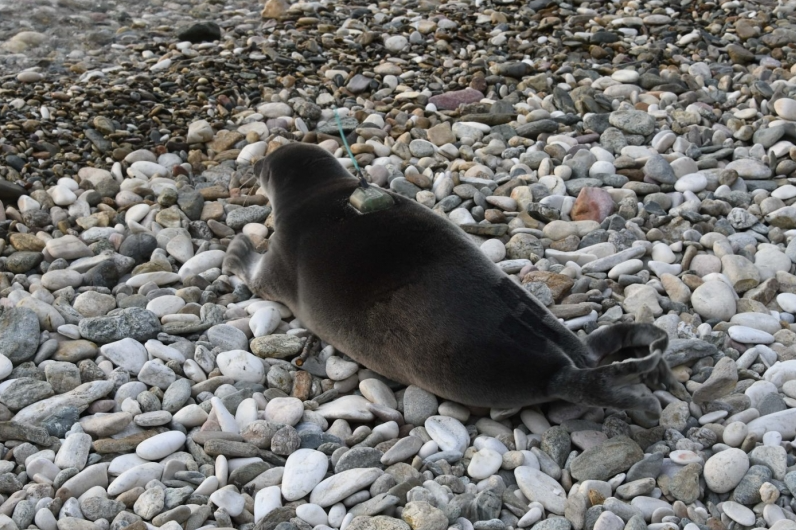
The expedition was organized by the A. N. Severtsov Institute of Ecology and Evolution of the Russian Academy of Sciences (IEE RAS). It was attended by leading specialists of IEE RAS and students of the Faculty of Biology of Moscow State University in the framework of educational practice, as well as employees of the Baikal branch of FGBI VNIRO and FGBI "Zapovednoe Podlemorye". As part of the expedition, research work was carried out in three directions.
Another summer expedition to study the state of the Baikal seal population took place from July 27 to August 17. Traditionally, field work took place on the Ushkany Islands, which are a place of accumulation of seals in the summer. Experts visually and using a quadrocopter estimated the size of the seal population, and satellite sensors were installed on 17 individuals to track the movement of animals.
First, visual observations of the seals' haul-out on Tonky Island were carried out, which included an estimate of the seal population, the number of sick and non-molted animals. This work is a continuation of the work begun as part of the 2020 summer expedition.
Secondly, seals were counted using a quadcopter on three of the four islands of the Ushkany archipelago. Registration on Tonky Island was carried out after a visual assessment, which will help to account for animals that were under water and were not available for visual observation. The censuses carried out on the Dolgiy and Krugly islands will make it possible to more accurately estimate the total number of the Baikal seal on the Ushkany Islands.
Thirdly, during the expedition, animals were captured to install satellite transmitters and take biological samples for further research. The capture was carried out by specialized specialists from the Baikal branch of the FGBI VNIRO. A total of 26 seals were caught, 17 of which were equipped with satellite transmitters to track the movement of the animal. According to experts, not a single animal was hurt. Samples of wool, vibrissae and blood were taken from all animals for further laboratory analysis.
This year, several Russian companies drew attention to the scientific research of the Baikal seal, which provided financial support to the project to study the population of the Baikal seal and directly transferred funds to the IEE RAS. With the assistance of the Lake Baikal Foundation, 3 million rubles were assigned to the IEE RAS for the project. The study of the population of the Baikal seal is carried out within the framework of the comprehensive Research Program for the Baikal seal, approved by the IEE RAS for the period up to 2025 with the support of the Lake Baikal Foundation.
Earlier, the agency reported that scientists found signs of a skin disease in Baikal seals. This was announced on Monday by the director of the Baikal Museum of the Irkutsk Scientific Center of the SB RAS Alexander Kupchinsky.
Related materials:
Baikal-daily: "Baikal seals were "chipped"
